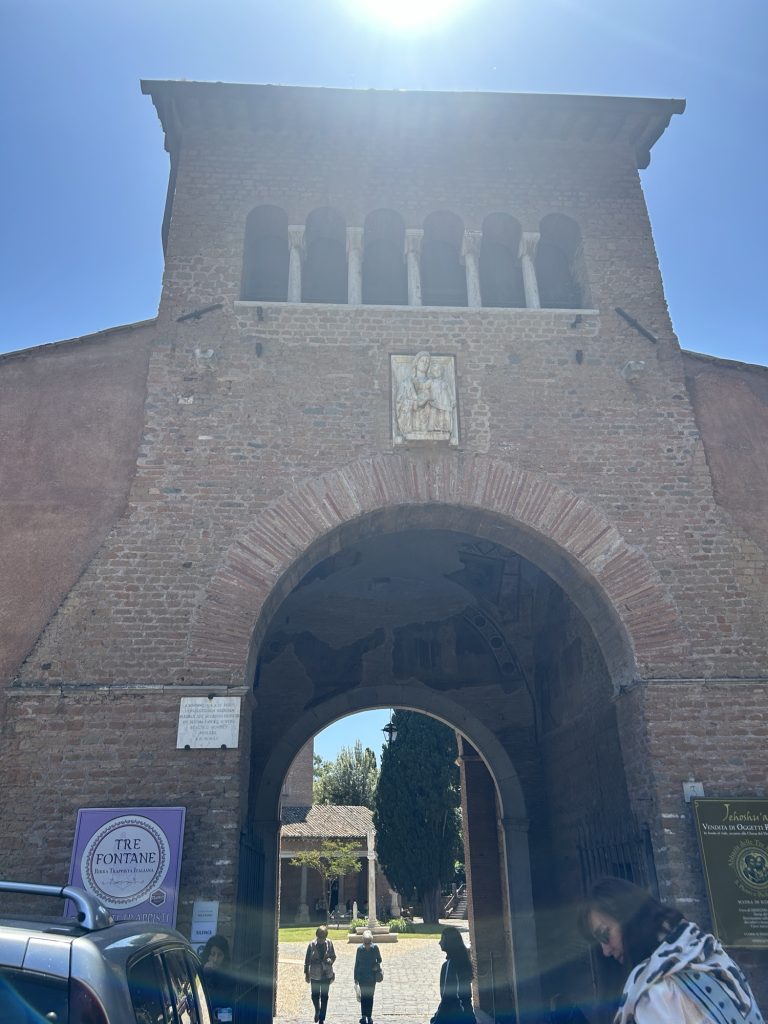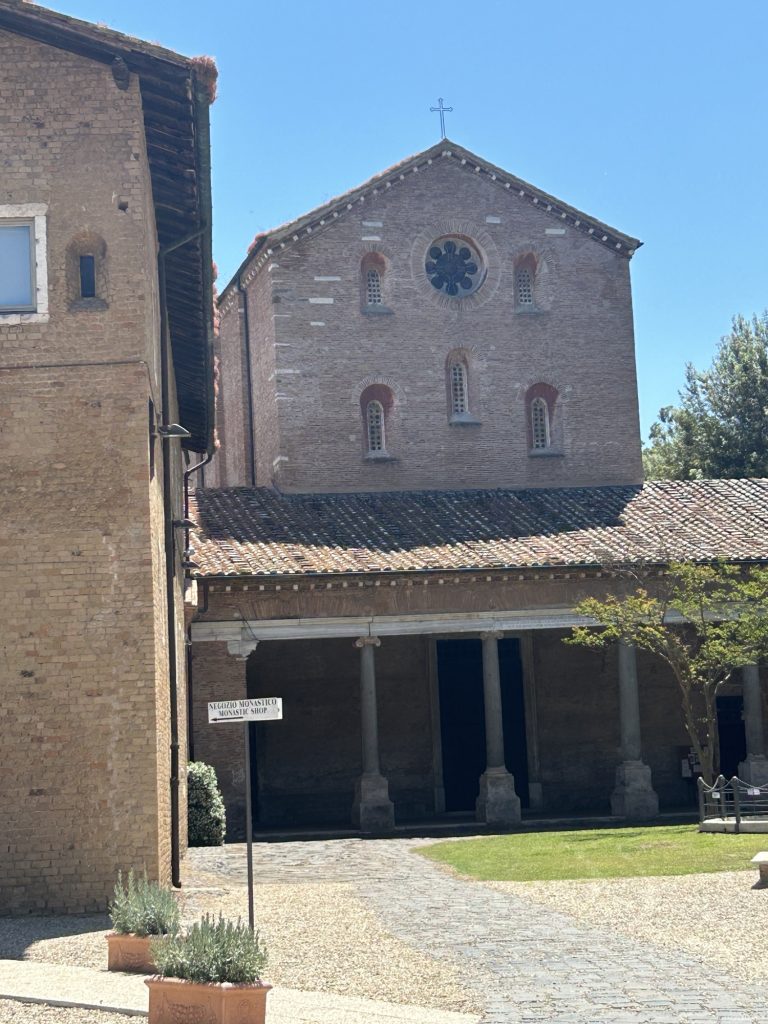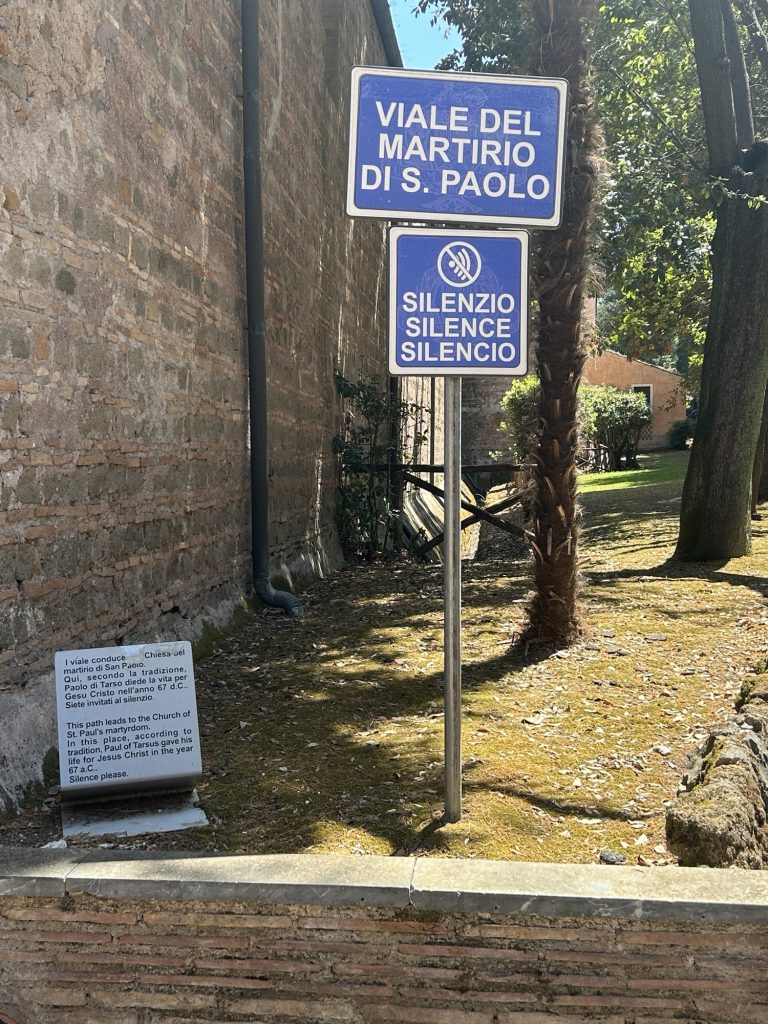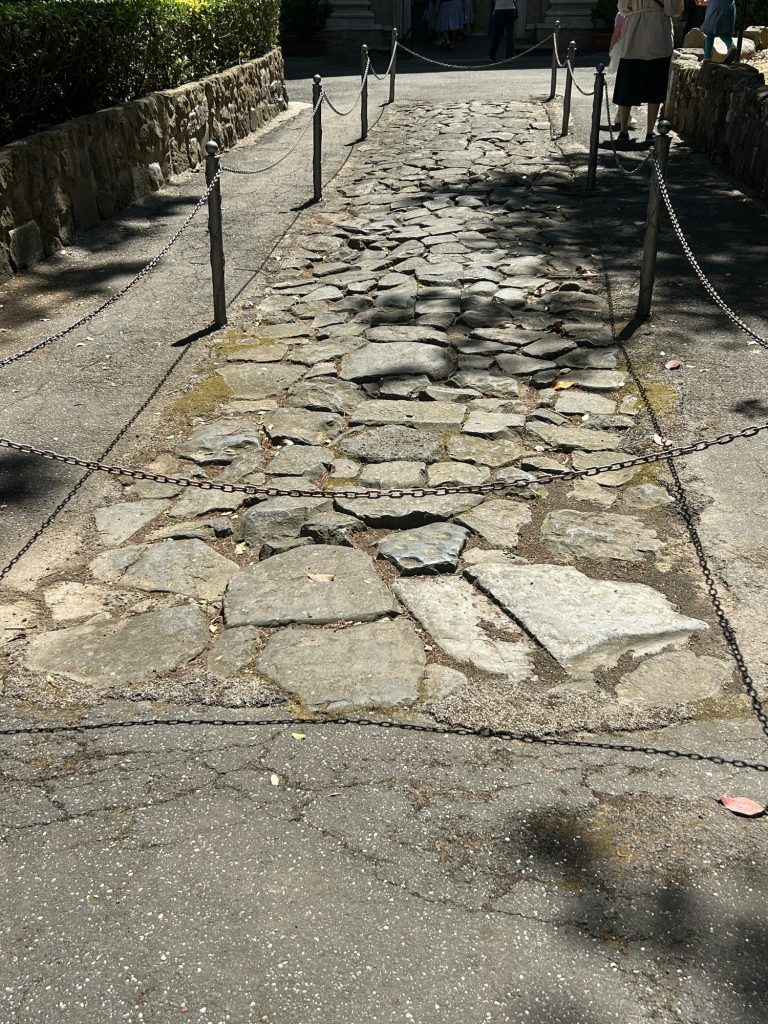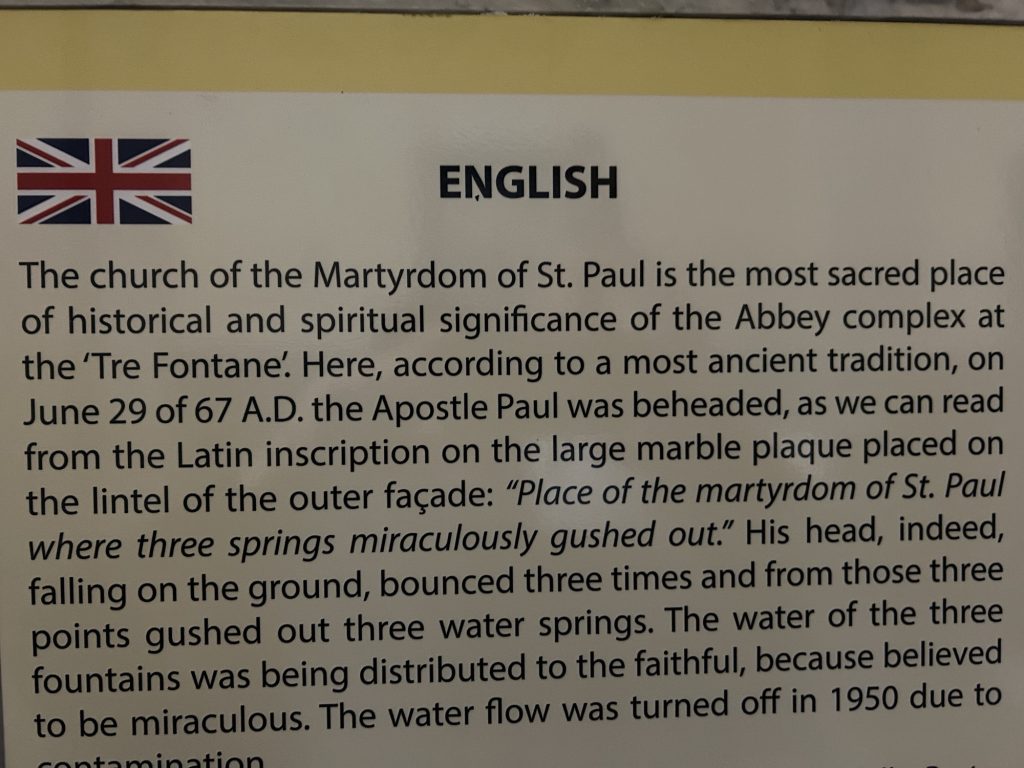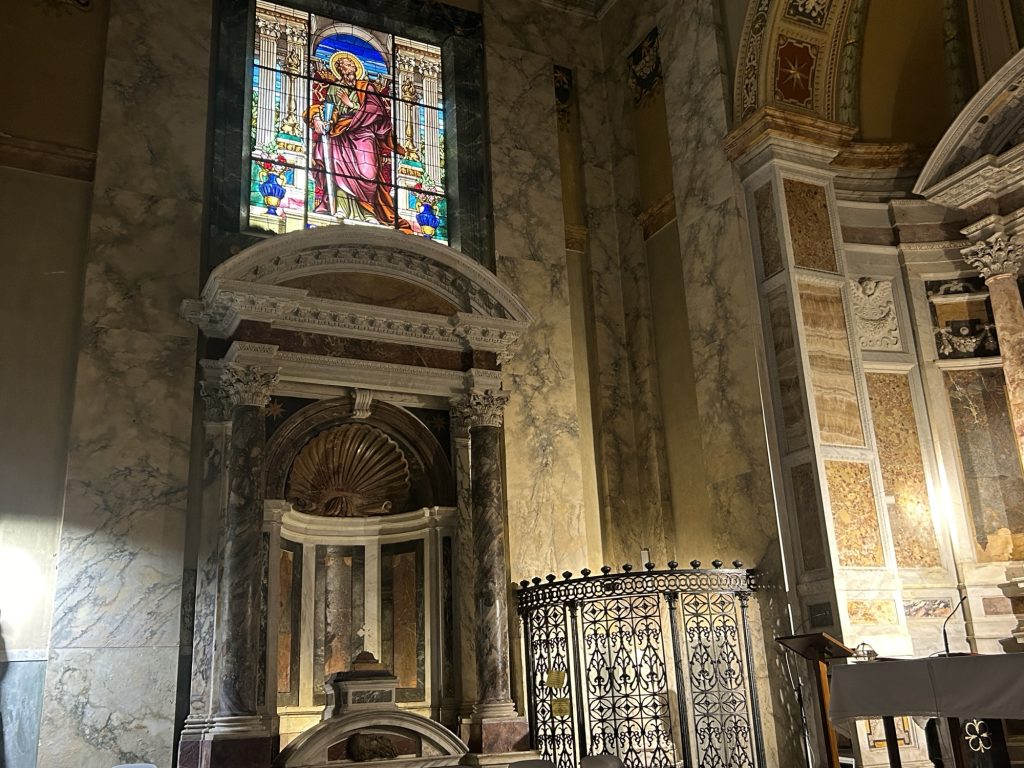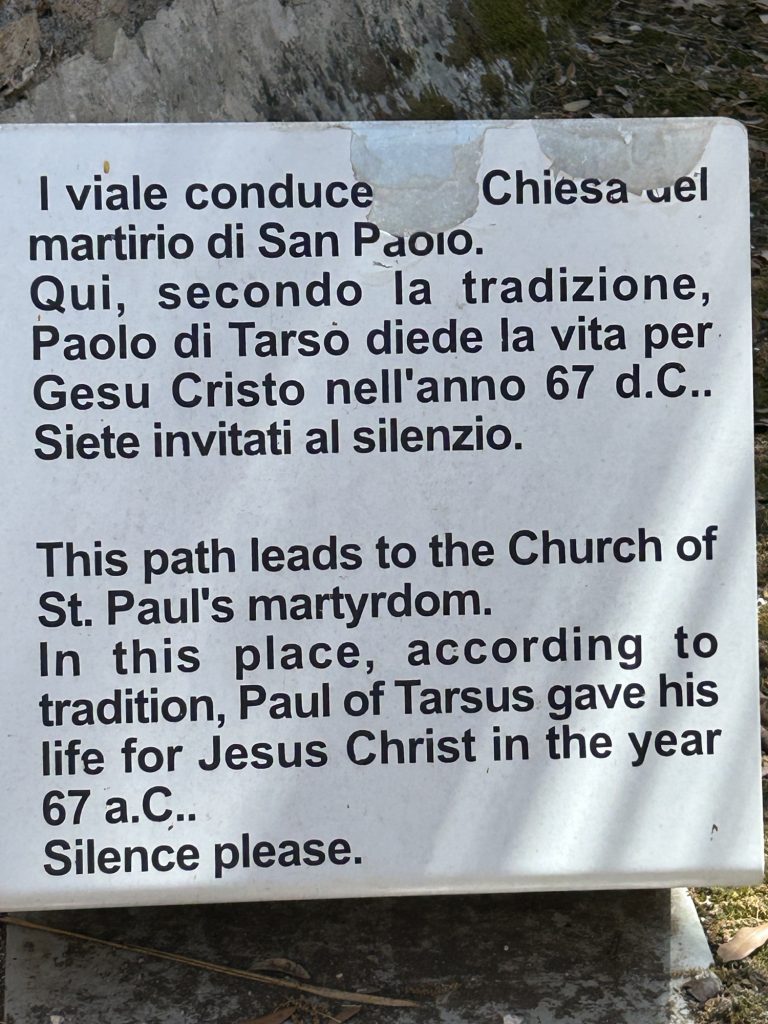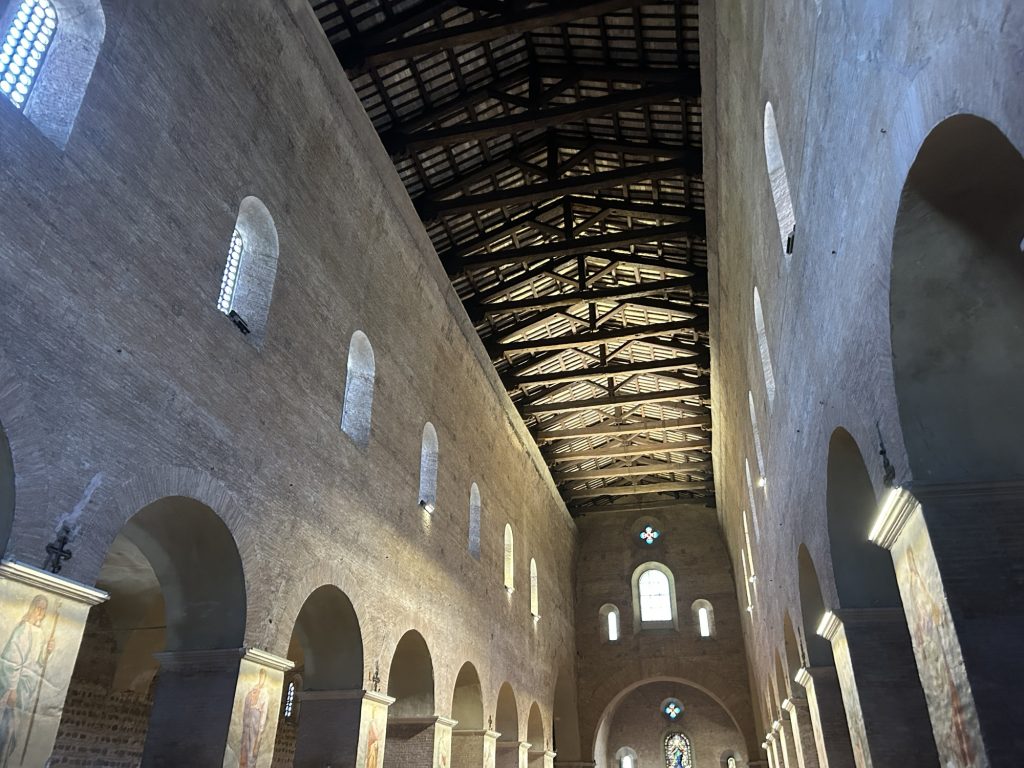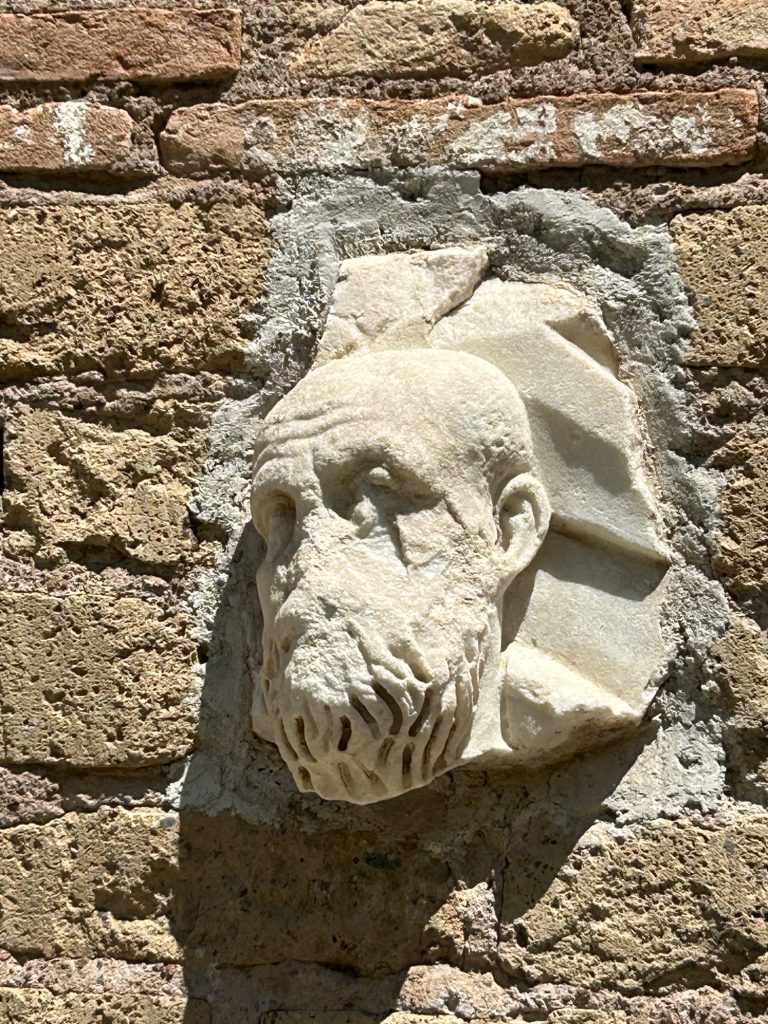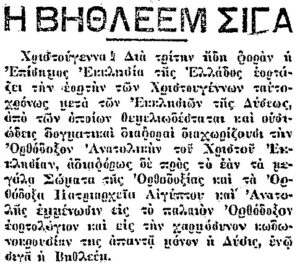Tre Fontane – The Place of Martydom of the Holy Apostle of the Nations, St. Paul

The Sacred Ground of Tre Fontane and the Martyrdom of St. Paul the Apostle
In the heart of Rome lies a site of profound significance for Orthodox Christians: Tre Fontane, the place traditionally associated with the martyrdom of St. Paul the Apostle. This sacred ground, steeped in history and spiritual resonance, offers a poignant reminder of the early Church’s trials and triumphs.
The Historical Context
St. Paul, originally known as Saul of Tarsus, underwent a dramatic conversion from persecutor of Christians to one of Christianity’s most fervent apostles. His missionary journeys, chronicled in the New Testament, spread the Gospel far and wide, establishing communities of believers across the Roman Empire. His epistles form a significant portion of the New Testament, providing theological insights and practical guidance that continue to inspire the faithful today.
Martyrdom at Tre Fontane
According to tradition, St. Paul met his martyrdom at Tre Fontane, or “Three Fountains,” named for the miraculous events surrounding his martyrdom. In AD 67, under the emperor Nero’s persecution of Christians, Paul was condemned to death by beheading—a relatively merciful punishment due to his Roman citizenship. As legend has it, when Paul was beheaded, his head bounced three times upon the ground, and at each spot, a spring miraculously sprang forth, hence the name Tre Fontane.
The site, located on the Via Laurentina in Rome, has long been venerated by Christians. Pilgrims visiting Tre Fontane can see the three springs, each marked by a small chapel.
Spiritual Significance
St. Paul’s martyrdom at Tre Fontane is not merely a historical event but a profound spiritual testament. His life and death exemplify the Christian virtues of faith, courage, and endurance. Paul’s willingness to face death rather than renounce his faith serves as a powerful reminder of the cost of discipleship and the eternal hope that lies beyond earthly suffering.
For Orthodox Christians, St. Paul’s legacy is woven into the fabric of our faith. His teachings on grace, redemption, and the transformative power of Christ resonate deeply within the Orthodox tradition. The physical place of his martyrdom offers a tangible connection to the early Church and the apostolic witness that forms the foundation of our belief.
Pilgrimage and Reflection
Visiting Tre Fontane can be a deeply moving experience for Orthodox Christians. It provides an opportunity to walk in the footsteps of St. Paul, to meditate on his words, and to draw inspiration from his unyielding faith. The serene environment of the abbey, coupled with the historical and spiritual significance of the site, invites pilgrims to a deeper contemplation of their own faith journey.
In a world often marked by division and uncertainty, the example of St. Paul stands as a beacon of hope and unity. His life reminds us that the path of righteousness may be fraught with challenges, but it is also filled with divine grace and purpose.
Conclusion
The story of Tre Fontane and the martyrdom of St. Paul the Apostle is a cornerstone of Christian heritage. It challenges us to live with conviction, to embrace our faith with passion, and to remember that the trials we face are part of the greater narrative of God’s redeeming work.
